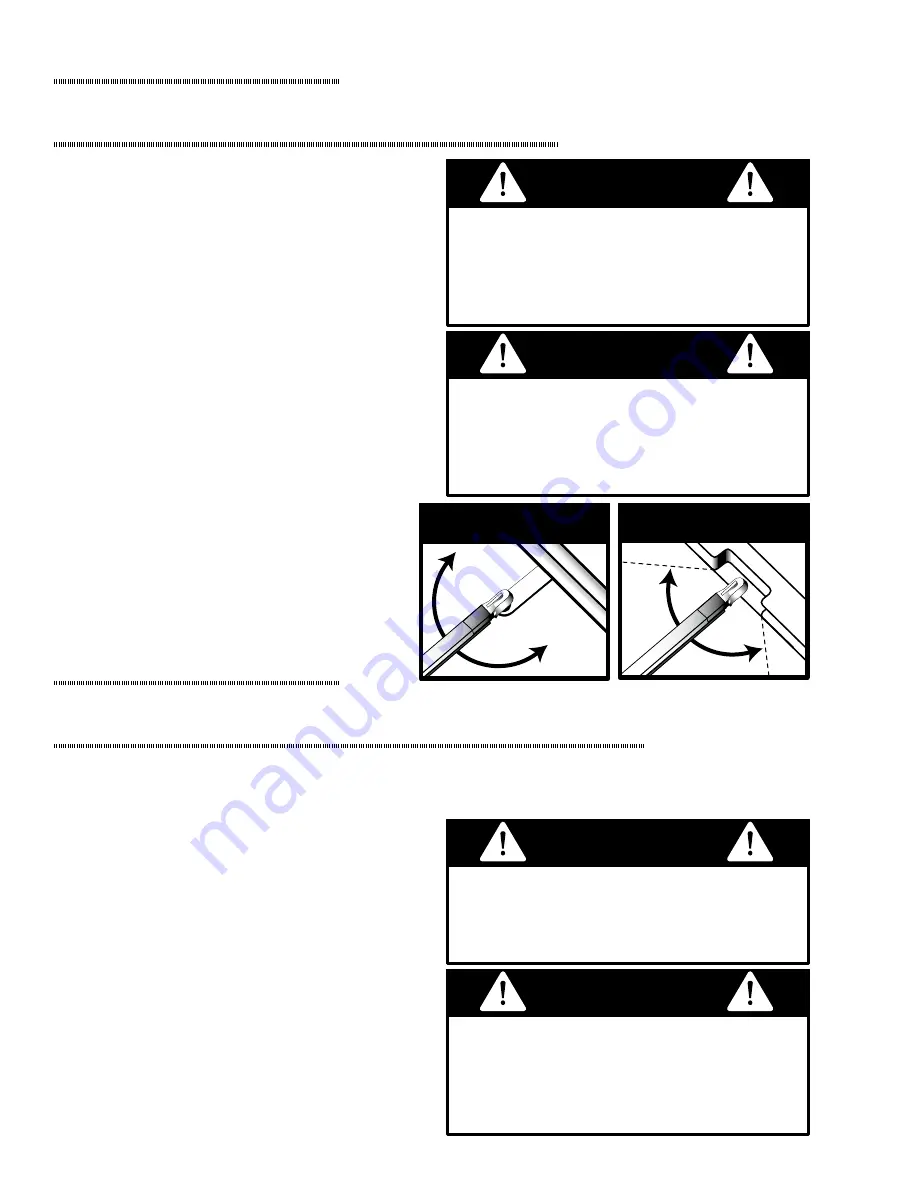
4
Using your FLOE trailer
Hitch Selection & Use
When selecting a hitch, there are four important things to
keep in mind:
• Load capacity --
Load should never exceed the load
capacity of your hitch or tow vehicle.
• Ball/hitch --
All FLOE tilt trailers use 2” couplers. Make
sure trailer is connected to a properly secured 2” ball and
hitch.
• In-set or out-set hitch --
FLOE recommends an out-set or
receiver-type hitch (See below).
• Hitch Height --
Hitch should be set so the trailer is level.
These illustrations show that a trailer’s turning radius is
significantly reduced when towed by vehicles equipped with
an “in-set” hitch. To reduce the risk of tongue damage, we
recommend the use of an “out-set” or “receiver-type” hitch.
When turning or backing up, the vehicle operator must
exercise good judgement. The manufacturer will not be
responsible for damage from “jackknifing.” Jackknifing is
damage that results from the tongue or trailer coming in
contact with the tow vehicle.
WARNING
Out-set Hitch (Recommended)
Bumper
In-set Hitch (NOT Recommended)
Bumper
When connecting your trailer to the towing vehicle, it is
important that your hitch coupler is adjusted with the
correct amount of force for both smooth and safe trailer
performance. A loose coupler could disconnect and cause
product damage and/or serious injury or death.
WARNING
Using your FLOE trailer
Hitch Coupler Adjustment
All FLOE models have a lever lock hitch coupler. With a lever lock coupler, the amount of locking force can be adjusted to the
diameter of the hitch-ball. A coupler that is adjusted too tight will make it difficult to push down on the lever lock and may cause
vibration from the trailer to the tow vehicle. A coupler that is too loose runs the risk of coming off the hitch-ball. When properly
adjusted you should be able to easily push down on the lever
lock but yet not have any rattle between the hitch-ball and
coupler when you apply upward force. To change the amount
of locking force against the hitch-ball:
1. Release the hitch coupler locking lever (to its straight up
position).
2. Locate the adjustment nut on the bottom of the hitch coupler.
3. Rotate the nut on the threaded shaft with a 3/4” socket.
Turn counter-clockwise to decrease tightness, or clockwise
to increase tightness.
4. Re-mount the trailer coupler on the hitch-ball.
5. Push down the hitch coupler locking lever to its original
locking position.
6. Repeat steps 1 through 5 until a snug fit is obtained.
Do not attempt to hook up or use any trailer that has
structural damage. It is the operators responsibility to
inspect the trailer before each use. A trailer failure could
cause severe or fatal injury.
WARNING
Pulling a trailer that is not level could greatly affect the
trailer’s performance and create an uncomfortable and
dangerous situation while towing. It could also create
excessive or negative tongue weight which can cause
either tongue or axle damage.
WARNING





































